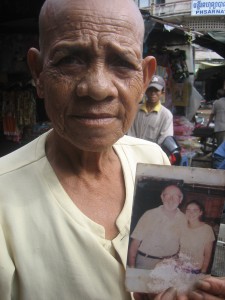Do not ask me if your 17 year-olds can get paid to “volunteer” with us
UGH!
I am SO fed up with these “pay to volunteer” organizations making money and taking in young gap-year kids and then “offering” them to us as employees where we “only need to cover their living expenses.” REALLY? You want me to take your unskilled 17 year-old, play babysitter for a few months as they struggle to add value to our organization while being tempted away by the likes of “Bar Street” and expat adventures, and you want me to PAY them to have his “life changing experience” while branding it “volunteering”? NO… thanks anyway. I wrote a comment like this back to an inquiry a few months ago, and the response was “Yes, well their living expenses do not need to be very high and we can negotiate those,” in which case I realized that even their email-responders must also be 17 years old.
I am being a hypocrite – I know this. I have done trips in the past where I was able to fundraise for my trip and I certainly have volunteered my time in ways where I was clearly not qualified to be “helping”. Having done those things though, I think I am still, if not better, able to state clearly: this should not be common practice. Additionally, PAYING a 17 year old kid to work in an organization is taking this even a step further which makes me half want to yell into the email when I get this kind of request and half laugh at the audacity and ludicrous idea overall.
There are all these volunteer placement organizations based in Siem Reap which send volunteers to teach English at orphanages, but I have already written a lot about my strong feelings against orphanage visits after having learned from making many of these same mistakes myself. Those groups sometimes call us to see if we will take their volunteers, and to the group that emailed today asking if we would take their 17 year olds as they were in a “dire situation as their other placement canceled”, offering that I would once again only have to cover their living expense, I wrote this reply:
Hello Name-Removed Lady–
I assume my response from a few months ago when another member of your team contacted us about taking your volunteers was not passed on. I rejected the “offer” then as I will now because I do not believe in this type of program. These are 17 year old kids, many of whom have little to no experience other than having been privileged enough to go to good high schools. I am fine with them wanting to come help, but I am not at all fine with:
a) their being allowed to “fundraise” for their flights, as if their time would be more valuable than using that money to directly support these causes. The experience they will get and the lessons they will learn in Cambodia are indeed worth paying for, and I assume many of them come from families that could indeed afford this.
b) the fact that your organization has them fundraise over $5000 and they then still expects the NGOs on the ground to cover costs. Once again, if they want to “volunteer” – they should volunteer – and at minimum cover their own expenses on the ground.
c) their placements being working with kids. There is too much scrambling to find volunteer placements with kids in Cambodia – we often get calls about this for our education programs. Kids should not be treated as a commodity to be sold by international agencies as a way to keep their volunteer programs going.
We do indeed take volunteers, but they have to have the skills to fit our needs, are unpaid, and work in our offices, not with kids in our programs.
I hope you understand that my strong feelings on this matter come from five years of watching young “volunteers” get drunk and run around scantily dressed on bar street here in Siem Reap as they get paid a “living wage” which is over double the local salaries of people much more qualified than they are.
I am sorry that we are not able to help you at this time and I hope the tone of this message reflects that my attitude towards this situation is not particular to you or to your organization, but this growing trend in general.
– Daniela
Now I can just link people here next time they ask if I will pay for their gap year students to work with us!





